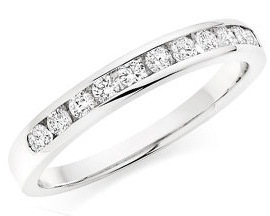12 Popular Types of Cereals in the World with their Benefits!
Cereals! They are one holy-grain option for those who prefer to have a healthy lifestyle. From breakfast to snacks and more, cereals are with various options filled with health benefits. But how many types of cereals do you know till now, or use in your regular everyday life? If it is only the usual ones like corn or wheat, you must know there are various other types too!
They can be an everyday staple in our diet and are a perfect rich source of minerals, proteins, carbs, vitamins, and more. Today, let us learn all the different kinds of cereal varieties around us.
Cereals: What Are They, The History Behind Them, And More
According to Food and Agricultural Organization (FAO), cereals are those products that are harvested for dry grain. They belong to the gramineous family and are classified under fodder crops (1). There are various types of cereals popular in the world, the most common ones are wheat, Maize, corn, millet, barley, and more. Cereals are popular for delivering a high levels of nutrients easily into one’s body by their intake.
Besides the raw ones we know here generically, the processed cereals are those that we consume today as breakfast choices. They had existed in our world ever before since the 19th century, starting from America when there were not many fiber options in their diet. Cereals became the primary choice for many eventually in North America and Europe to fill in the dietary requirements and provide nourishment.
Different Best Types Of Cereal Grains In The World
We learnt briefly what cereal grains are. Now, let us understand the various types of cereals in the world and their facts. Here we go with types of cereals and pictures!
1. Wheat:

Wheat is the most common among cereal varieties and is a widely grown crop across the globe. But if you think wheat a homogeneous category is, you got it wrong. Again, there are different types of wheat within them, from bread wheat to durum, including emmer, Kamut, and einkorn. The primary purpose of wheat is for human consumption. The main seasons for wheat are both spring and winter.The crop is present in several parts of the globe, tropical, subtropical, and temperate regions. Major countries that produce wheat include China, India, Russia, the US, Canada, Pakistan, Australia, and Germany. Wheat also boasts several health benefits that make it great to consume, besides the culinary applications. The health benefits include wheat being low in fat, sodium-free, rich in potassium, dietary fiber, zinc, magnesium and more (2).























